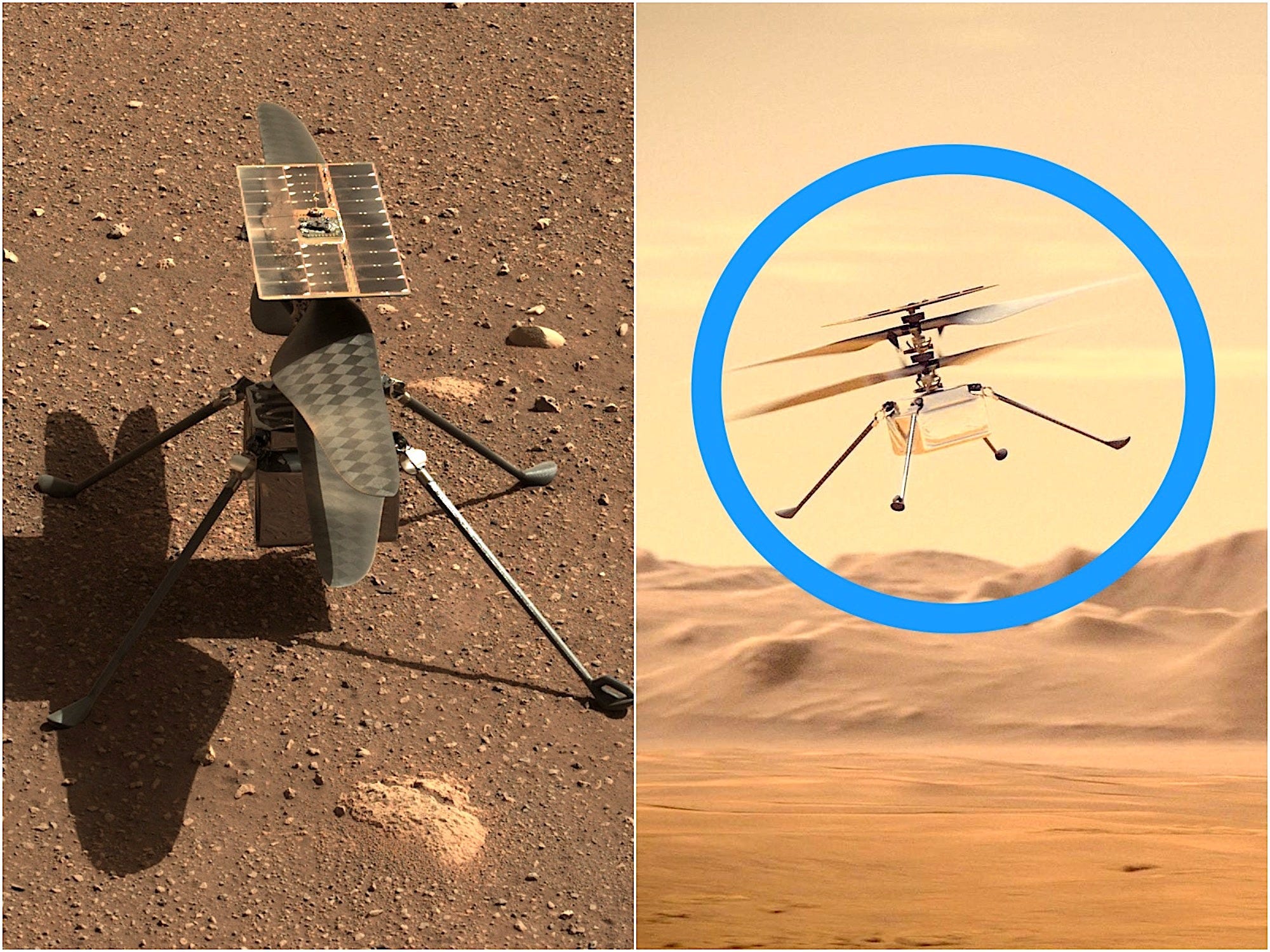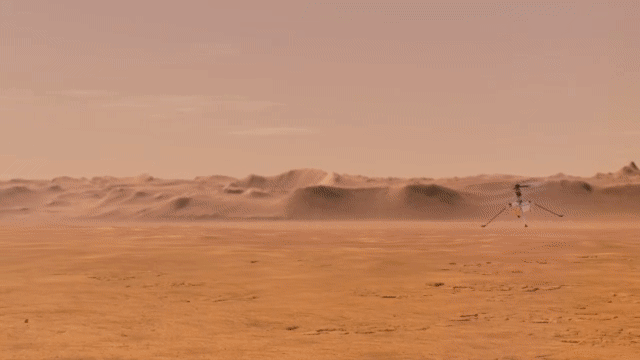
NASA/JPL-Caltech/ASU
- NASA's Ingenuity helicopter flew sideways over Mars for the first time on Thursday.
- Ingenuity's team plans to fly it farther and faster in the next three flights – even if it crashes.
- The space drone is expected to beam back color photos from its new flight.
- See more stories on Insider's business page.
NASA's Ingenuity helicopter successfully executed a second, more daring flight over the surface of Mars on Thursday morning.
Ingenuity made its aerial debut with a 10-foot hover on Monday – the first controlled, powered flight ever conducted on another planet. The helicopter flew higher and further on Thursday morning, completing its first sideways movement.

NASA/JPL-Caltech
NASA hasn't released more detail, but if the entire flight went according to plan, Ingenuity's rotor blades should have spun furiously at 5:30 a.m. ET, when the sun was high on Mars.
As the rotors reached a speed 5 times faster than an Earth helicopter, they gave the chopper enough traction in the thin Martian atmosphere to lift about 16 feet off the ground.
Then Ingenuity likely tilted and flew sideways for about 7 feet, before stopping to hover. From there, it probably pointed its camera in different directions, producing stunning color photos that should soon beam back to NASA.
Finally, Ingenuity likely flew back the way it came and landed gently in the copper-colored Martian dust.
-NASA JPL (@NASAJPL) April 22, 2021
The data from the flight "looks good on altitude, lateral motion, all the turns and landing," Bobby Braun, director of planetary science at NASA's Jet Propulsion Laboratory, said on Twitter. "Another great flight."
These flights offer just a peek at the potential of future space helicopters, which could explore parts of Mars and other planets that are inaccessible to rovers. Caves, canyons, mountains, and rocky terrains could all be the domain of a new generation of space-drone explorers.
The Ingenuity team will probably try to fly again within a few days. They have less than two weeks to complete up to three more increasingly daring aerial escapades. By the final flights, Ingenuity's controllers plan to push the helicopter as far and fast as it will go. In the process, they expect Ingenuity will crash.
"We really want to push the rotorcraft flights to the limit and really learn and get information back from that," MiMi Aung, the project manager for Ingenuity, said in a Monday press briefing.
"That information is extremely important," she added. "This is a pathfinder. This is about, you know, finding if there any 'unknown unknowns' that we can't model. And we really want to know what the limits are. So we will be pushing the limits, very deliberately."
